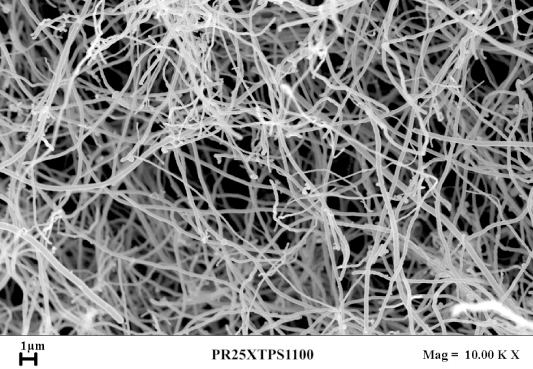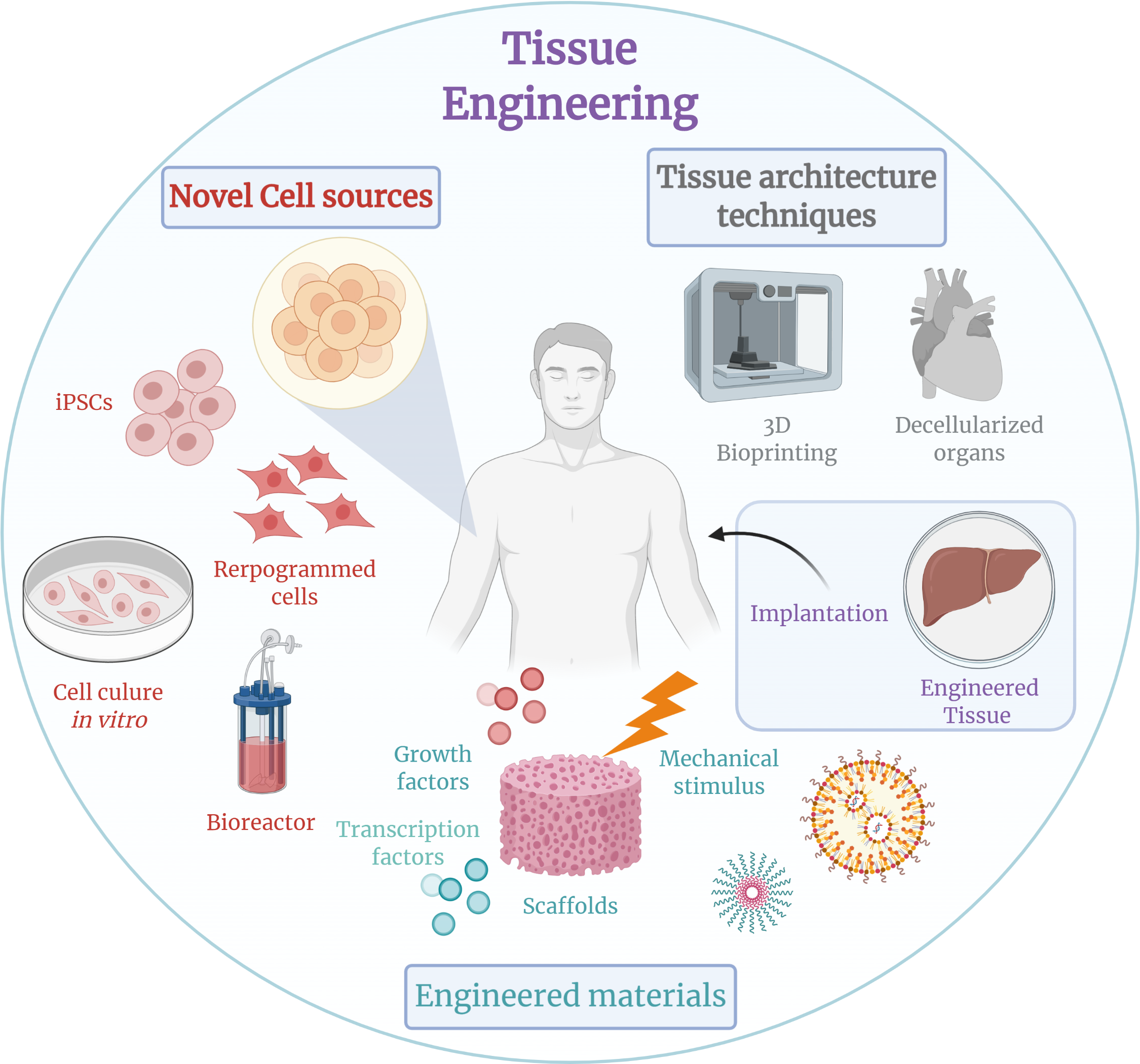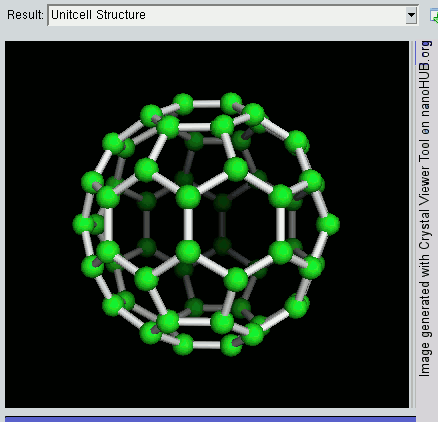|
Impalefection
Impalefection is a method of gene delivery using nanomaterials, such as carbon nanofibers, carbon nanotubes, nanowires. Needle-like nanostructures are synthesized perpendicular to the surface of a substrate. Plasmid DNA containing the gene, and intended for intracellular delivery, is attached to the nanostructure surface. A chip with arrays of these needles is then pressed against cells or tissue. Cells that are impaled by nanostructures can express the delivered gene(s). As one of the types of transfection, the term is derived from two words – impalement and infection. Applications One of the features of impalefection is spatially resolved gene delivery that holds potential for such tissue engineering approaches in wound healing as gene activated matrix technology. Though impalefection is an efficient approach ''in vitro'', it has not yet been effectively used ''in vivo'' on live organisms and tissues. Carrier materials Vertically aligned carbon nanofiber arrays prepared ... [...More Info...] [...Related Items...] OR: [Wikipedia] [Google] [Baidu] |
Carbon Nanofiber
Carbon nanofibers (CNFs), vapor grown carbon fibers (VGCFs), or vapor grown carbon nanofibers (VGCNFs) are cylindrical nanostructures with graphene layers arranged as stacked cone (geometry), cones, cups or plates. Carbon nanofibers with graphene layers wrapped into perfect cylinders are called carbon nanotubes. Introduction Carbon has a high level of chemical bonding flexibility, which lends itself to the formation of a number of stable Organic and Inorganic Molecules. Elemental carbon has a number of allotropes(variants) including diamond, graphite, and fullerenes.Morgan, P. (2005) ''Carbon Fibers and Their Composites'', Taylor & Francis Group, CRC Press, Boca Raton, FL. Though they all consist of elemental carbon, their properties vary widely. This underscores the versatility of CNFs, which are notable for their thermal, electrical, electromagnetic shielding, and mechanical property enhancements. As carbon is readily available at low cost, CNFs are popular additives to comp ... [...More Info...] [...Related Items...] OR: [Wikipedia] [Google] [Baidu] |
Nanoneedle
Nanoneedles may be conical or tubular needles in the nanometre size range, made from silicon or boron-nitride with a central bore of sufficient size to allow the passage of large molecules, or solid needles useful in Raman spectroscopy, light emitting diodes (LED) and laser diodes. Usage Impalefection In 2005 the Research Institute for Cell Engineering at Japan's National Institute of Advanced Industrial Science and Technology (AIST) and Tokyo University of Agriculture and Technology used nanoneedles controlled by an atomic force microscope (AFM) to penetrate the nucleus of living cells and insert molecules of nucleic acid, proteins or possibly to carry out cell surgery. The technique can accurately establish the position of the needle by monitoring the force exerted. Cells to be used for tracking, diagnosing, and treatment of illness may be removed from the body and replaced after being injected. The 100 nm diameter needles were cut from silicon AFM tips using focused ion beam ... [...More Info...] [...Related Items...] OR: [Wikipedia] [Google] [Baidu] |
Nanomedicine
Nanomedicine is the medical application of nanotechnology. Nanomedicine ranges from the medical applications of nanomaterials and BioBrick, biological devices, to Nanoelectronics, nanoelectronic biosensors, and even possible future applications of molecular nanotechnology such as Molecular machine#Biological, biological machines. Current problems for nanomedicine involve understanding the issues related to Nanotoxicology, toxicity and Implications of nanotechnology, environmental impact of Nanomaterials, nanoscale materials (materials whose structure is on the scale of nanometers, i.e. billionths of a meter). Functionalities can be added to nanomaterials by interfacing them with biological molecules or structures. The size of nanomaterials is similar to that of most biological molecules and structures; therefore, nanomaterials can be useful for both in vivo and in vitro biomedical research and applications. Thus far, the integration of nanomaterials with biology has led to the ... [...More Info...] [...Related Items...] OR: [Wikipedia] [Google] [Baidu] |
Tim McKnight
Timothy Eric McKnight is an American biologist. He has been a key developer of a cell transfecting method using vertically aligned carbon nanofibers. Arrays of vertically aligned carbon nanofibers are modified with DNA and pressed into cells and tissue. Surviving cells can express DNA that is delivered during the penetration event, even when the DNA is covalently bound to the penetrant nanofiber element. This gene delivery technique has been termed Impalefection Impalefection is a method of gene delivery using nanomaterials, such as carbon nanofibers, carbon nanotubes, nanowires. Needle-like nanostructures are synthesized perpendicular to the surface of a substrate. Plasmid DNA containing the gene, and .... Selected publications * * 21st-century American biologists Living people Year of birth missing (living people) {{US-biologist-stub ... [...More Info...] [...Related Items...] OR: [Wikipedia] [Google] [Baidu] |
Tissue Engineering
Tissue engineering is a biomedical engineering discipline that uses a combination of Cell (biology), cells, engineering, Materials science, materials methods, and suitable biochemistry, biochemical and physicochemical factors to restore, maintain, improve, or replace different types of biology, biological tissues. Tissue engineering often involves the use of cells placed on tissue scaffolds in the formation of new viable tissue for a medical purpose but is not limited to applications involving cells and tissue scaffolds. While it was once categorized as a sub-field of biomaterials, having grown in scope and importance it can be considered as a field of its own. While most definitions of tissue engineering cover a broad range of applications, in practice the term is closely associated with applications that repair or replace portions of or whole tissues (i.e. bone, Autologous chondrocyte implantation, cartilage, blood vessels, Urinary bladder, bladder, skin, muscle etc.). Often, t ... [...More Info...] [...Related Items...] OR: [Wikipedia] [Google] [Baidu] |
Laboratory Techniques
A laboratory (; ; colloquially lab) is a facility that provides controlled conditions in which scientific or technological research, experiments, and measurement may be performed. Laboratory services are provided in a variety of settings: physicians' offices, clinics, hospitals, and regional and national referral centers. Overview The organisation and contents of laboratories are determined by the differing requirements of the specialists working within. A physics laboratory might contain a particle accelerator or vacuum chamber, while a metallurgy laboratory could have apparatus for casting or refining metals or for testing their strength. A chemist or biologist might use a wet laboratory, while a psychologist's laboratory might be a room with one-way mirrors and hidden cameras in which to observe behavior. In some laboratories, such as those commonly used by computer scientists, computers (sometimes supercomputers) are used for either simulations or the analysis of data. Scienti ... [...More Info...] [...Related Items...] OR: [Wikipedia] [Google] [Baidu] |
Nanomaterials
* Nanomaterials describe, in principle, materials of which a single unit is sized (in at least one dimension) between 1 and 100 nm (the usual definition of nanoscale). Nanomaterials research takes a materials science-based approach to nanotechnology, leveraging advances in materials metrology and synthesis which have been developed in support of microfabrication research. Materials with structure at the nanoscale often have unique optical, electronic, thermo-physical or mechanical properties. Nanomaterials are slowly becoming commercialized and beginning to emerge as commodities. Definition In ISO/TS 80004, ''nanomaterial'' is defined as the "material with any external dimension in the nanoscale or having internal structure or surface structure in the nanoscale", with ''nanoscale'' defined as the "length range approximately from 1 nm to 100 nm". This includes both ''nano-objects'', which are discrete pieces of material, and ''nanostructured materials'', which have inte ... [...More Info...] [...Related Items...] OR: [Wikipedia] [Google] [Baidu] |
Epitaxial Nanowire Heterostructures SEM Image
Epitaxy refers to a type of crystal growth or material deposition in which new crystalline layers are formed with one or more well-defined orientations with respect to the crystalline seed layer. The deposited crystalline film is called an epitaxial film or epitaxial layer. The relative orientation(s) of the epitaxial layer to the seed layer is defined in terms of the orientation of the crystal lattice of each material. For most epitaxial growths, the new layer is usually crystalline and each crystallographic domain of the overlayer must have a well-defined orientation relative to the substrate crystal structure. Epitaxy can involve single-crystal structures, although grain-to-grain epitaxy has been observed in granular films. For most technological applications, single domain epitaxy, which is the growth of an overlayer crystal with one well-defined orientation with respect to the substrate crystal, is preferred. Epitaxy can also play an important role while growing superlatti ... [...More Info...] [...Related Items...] OR: [Wikipedia] [Google] [Baidu] |
Photolithography
In integrated circuit manufacturing, photolithography or optical lithography is a general term used for techniques that use light to produce minutely patterned thin films of suitable materials over a substrate, such as a silicon wafer, to protect selected areas of it during subsequent etching, deposition, or implantation operations. Typically, ultraviolet light is used to transfer a geometric design from an optical mask to a light-sensitive chemical (photoresist) coated on the substrate. The photoresist either breaks down or hardens where it is exposed to light. The patterned film is then created by removing the softer parts of the coating with appropriate solvents. Conventional photoresists typically consists of three components: resin, sensitizer, and solvent. Photolithography processes can be classified according to the type of light used, such as ultraviolet, deep ultraviolet, extreme ultraviolet, or X-ray. The wavelength of light used determines the minimum feature si ... [...More Info...] [...Related Items...] OR: [Wikipedia] [Google] [Baidu] |
Gene Activated Matrix
In gene-activated matrix technology (GAM), cytokines and growth factors could be delivered not as recombinant proteins but as plasmid genes. GAM is one of the tissue engineering approaches to wound healing. Following gene delivery Gene delivery is the process of introducing foreign genetic material, such as DNA or RNA, into host cells. Gene delivery must reach the genome of the host cell to induce gene expression. Successful gene delivery requires the foreign gene delive ..., the recombinant cytokine could be expressed in situ by endogenous would healing cells – in small amounts but for a prolonged period of time – leading to reproducible tissue regeneration. References {{Reflist External links Cardium Presents Gene Activated Matrix Technology And Update On Excellarate Clinical Development Program At ASGT Annual Meeting Tissue engineering ... [...More Info...] [...Related Items...] OR: [Wikipedia] [Google] [Baidu] |
Wound Healing
Wound healing refers to a living organism's replacement of destroyed or damaged tissue by newly produced tissue. In undamaged skin, the epidermis (surface, epithelial layer) and dermis (deeper, connective layer) form a protective barrier against the external environment. When the barrier is broken, a regulated sequence of biochemical events is set into motion to repair the damage. This process is divided into predictable phases: blood clotting (hemostasis), inflammation, tissue growth ( cell proliferation), and tissue remodeling (maturation and cell differentiation). Blood clotting may be considered to be part of the inflammation stage instead of a separate stage. The wound healing process is not only complex but fragile, and it is susceptible to interruption or failure leading to the formation of non-healing chronic wounds. Factors that contribute to non-healing chronic wounds are diabetes, venous or arterial disease, infection, and metabolic deficiencies of old age.Enoch, S ... [...More Info...] [...Related Items...] OR: [Wikipedia] [Google] [Baidu] |





